I’ve heard that it’s not very safe to drive on a plugged tire. Is that true? Why is repairing or replacing a damaged tire a better option than plugging a tire? What are the dangers of driving on a plugged tire?
We’ve all been there before. You wake up or walk to your car after work, only to look down and see a flat tire and a nail sticking out. You don’t have time to take your vehicle into an auto shop and need a quick fix. It’s a small nail, so you plug your tire and go on with your life.
You only meant for the plug to be a temporary solution until you could get the tire replaced. Then life happens, and it’s a few days before you can get a new tire. Those few days turn into months, which can quickly turn into a year. You may start to ask yourself if it’s really safe to drive on a plugged tire.
It turns out that installing a plug can have a serious impact on the life and integrity of your tire. That is if it’s safe to plug your tire at all. Here is what you need to know about plugged tires and how safe it really is to drive on one.
The first thing you should consider when plugging a tire is if it’s safe to install a plug in the first place. There are specific cases when it’s safe to use a plug. Outside of these scenarios, driving on a plugged tire could be dangerous to you and other drivers.
Depending on the size of the puncture, the extent of the damage, and the tread of your tire, you may not be able to repair the tire with a plug. The size of the hole must be no larger than 0.25 inches and must be located on the tread of your tire. If the puncture is on the shoulder or sidewall, then you will need to replace the tire.
The angle of the puncture also makes a big difference in the effectiveness of a plug. Ideally, the nail or object that punctured your tire went straight in. This would make a repair fairly straightforward. However, if the tire was punctured at an angle, the plug will have a hard time completely sealing the punctured area. Take note of how the nail or screw looks and the angle that it entered the tire.
However, if the tire was punctured at an angle, the plug will have a hard time completely sealing the punctured area. Take note of how the nail or screw looks and the angle that it entered the tire.
The age and quality of your tire is also an important factor in whether or not it can be plugged. If the tread on your tire has been worn below 2/32 of an inch, then your tread is too far gone to be plugged. If you’re wondering how you can measure this, 2/32 of an inch is the amount measured by the classic penny test. Make sure your tire passes the penny test before you even thinking of plugging it. If it doesn’t pass the test, then it’s probably time for a new set of tires anyway.
If you have to ask yourself whether or not your tire can be repaired, that may be a sign that it’s time to move on. A TIA-certified tire technician can inspect your tire and let you know for certain if it’s safe.
Another thing to think about when it comes to driving on a plugged tire is how your repair may impact the manufacturer’s warranty on your tire. Improper repair and maintenance is a surefire way to void your warranty. Think twice the next time you consider opting for a DIY approach on your next tire repair.
Improper repair and maintenance is a surefire way to void your warranty. Think twice the next time you consider opting for a DIY approach on your next tire repair.
When it comes to the safety of your vehicle, it’s always best to leave things to the experts. By having your tire repaired by a certified professional, you can be confident your repair is performed properly, and your manufacturer warranty is still “good.”
The biggest problem with driving on a plugged tire is that you still have a hole in your tire! While it may be a temporary fix, it’s important to recognize that there is still a structural failure in your tire that needs to be addressed.
It only makes sense that a plugged tire cannot handle the same level of stress and strain as a tire in good condition. This is especially true when you start reaching higher speeds on the highway. The manufacturer won’t support a tire’s speed rating once it has been repaired. So, if you plan on racing, off-roading, or just want to go fast, a plugged tire isn’t going to work.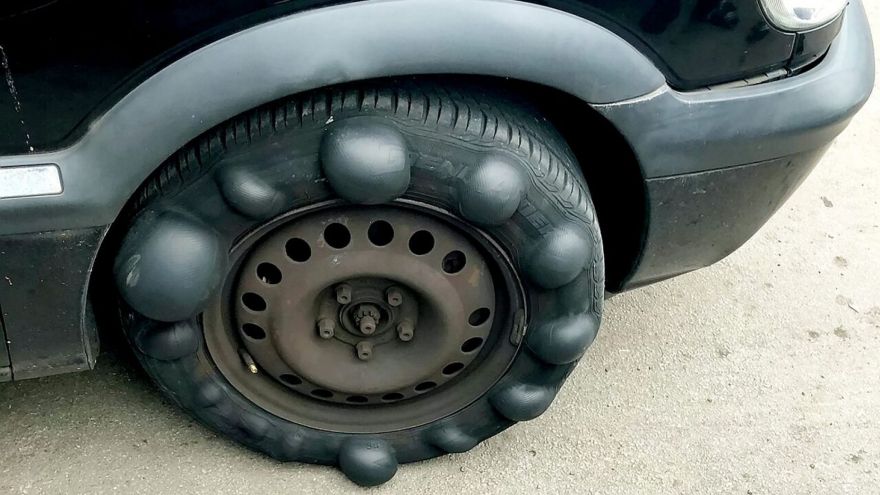
Over time, it’s possible for that small puncture to slowly get larger. This results in a greater loss of air while also increasing your chances of a blowout on a road. Furthermore, the plug itself may fail while you are driving, putting you back where you started.
In the event of a flat tire from a nail or screw, the best course of action is always to replace the tire. A plug or patch for your tire may help tide you over until you can have it replaced, but it’s important to remember that a plug is meant to be a temporary fix.
While it may be tempting to see how far you can get with a five-dollar repair, the consequences of a plugged tire failing will be much worse than if you had replaced the tire in the first place.
If you just purchased a tire or recently bought a set of expensive tires, it can be a frustrating experience. If this is the case and you hope the tire can be saved, it may be worth it to have it inspected by a professional.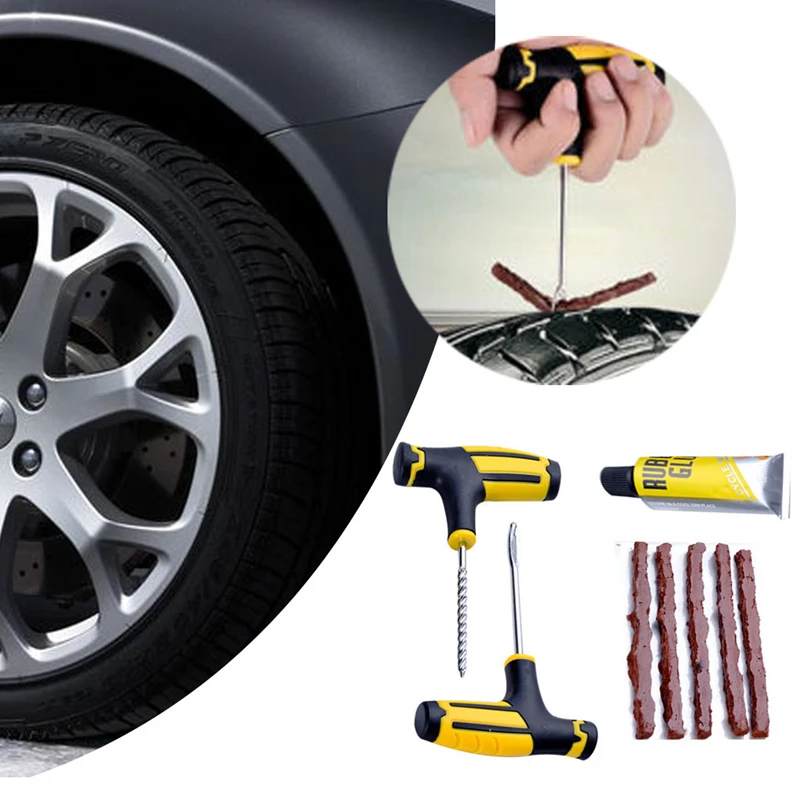
The TIA-certified tire experts at Tread Connection know how to properly diagnose, inspect, and repair flat tires. When you work with Tread Connection for your flat repair, the tire will be removed from the wheel and carefully inspected inside and out. This helps us ensure whether or not it can be safely repaired.
If the tire can be repaired, our team will take care of it for you. In the event that your tire cannot be safely repaired, our team will recommend a replacement from our wide range of tires to find the right one for your needs, and your budget.
It’s never worth it to gamble when it comes to the safety of you and your vehicle. Don’t try to see how long you can drive on that plugged tire. Have your tire inspected and repaired the right way by the TIA-certified tire experts at Tread Connection.
We bring the tire shop to you and can repair your flat or replace your tire at your home and on your schedule.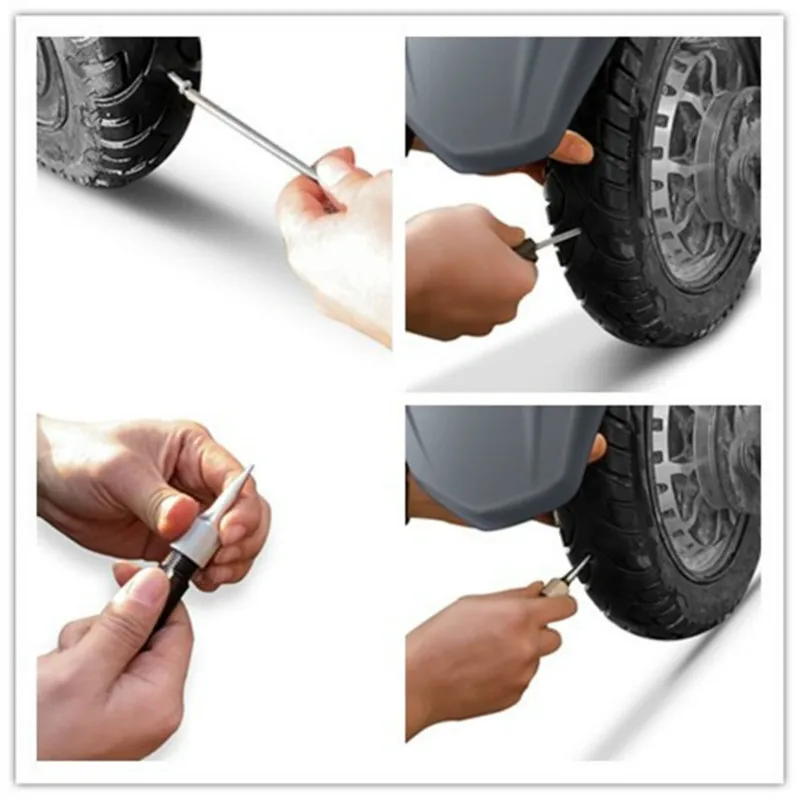 Schedule your tire service with Tread Connection today!
Schedule your tire service with Tread Connection today!
BUY TIRES
Despite eight figure verdicts and public safety campaigns by the National Highway Traffic Safety Administration (NHTSA) highlighting the dangers of improper tire repairs, (“plug-only” and “patch-only”) repairs, suppliers continue to market and sell plug-only repairs kits. Likewise, tire repair shops continue to use these improper repair methods.
This web page discuss tire repair techniques, the relative safety of those various repair methods, tire repair litigation and some of the reasons these unsafe methods persist.
Safe and Unsafe Ways to Repair a Tire
Most people discover that their in-service tire may have a puncture after noticing that their tire is flat or low on air.
There are three common ways to repair a punctured tire: A plug-only, a patch-only repair or a combination repair.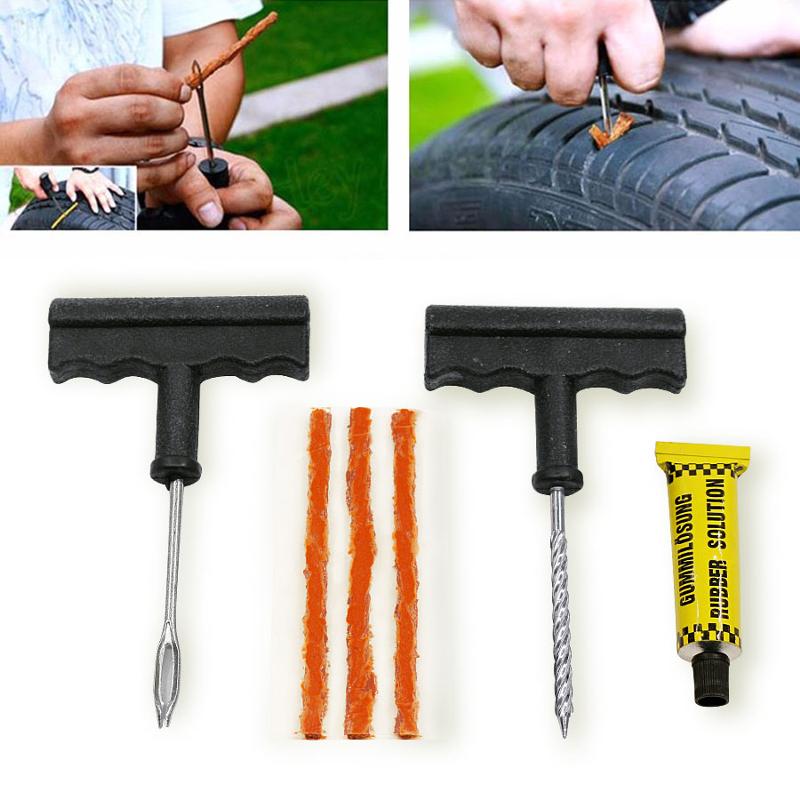 The patch-only and combination repairs require the technician to demount the tire from the rim to examine the inside of the tire for damage and repair it from the inside. The plug-only repair does not. When tire rubber has been punctured, the hole tends to close up when the puncturing item us removed. Therefore, unless there has been damage or the puncturing object is still protruding from the tire, it can be difficult to locate the puncture through a visual examination only.
The patch-only and combination repairs require the technician to demount the tire from the rim to examine the inside of the tire for damage and repair it from the inside. The plug-only repair does not. When tire rubber has been punctured, the hole tends to close up when the puncturing item us removed. Therefore, unless there has been damage or the puncturing object is still protruding from the tire, it can be difficult to locate the puncture through a visual examination only.
Technicians will often swab the tire with soapy water or dunk it into a tank to look for bubbles of escaping air. It is impossible to inspect the cavity of the tire for any puncture damage without removing the tire from the rim. This is one of the multitudes of reasons why a plug-only repair is an unsafe method.
A plug-only repair is accomplished by inserting the plug through the outside of the tire with an insertion tool. The insertion tool is the removed, leaving the plug in the hole, and thereby filling it. Often times, this plug-only repair is a “string plug,” which consists of a 4 to 5 inch long woven cord that is covered with a tacky substance. String plugs are typically supplied as part of a repair kit consisting of a reaming tool, an insertion tool and a few string plugs. Some kits also contain rubber cement to help create a seal between the string plug and tire. The cost of a string plug repair kit ranges from $4.00 to $5.00. It is also possible to purchase additional string plugs at a cost of $2.00 to $3.00 for a package of three to five replacement plugs. A string plug repair facility cost half of other types of repairs, making it an attractive alternative for consumers looking to save money.
Often times, this plug-only repair is a “string plug,” which consists of a 4 to 5 inch long woven cord that is covered with a tacky substance. String plugs are typically supplied as part of a repair kit consisting of a reaming tool, an insertion tool and a few string plugs. Some kits also contain rubber cement to help create a seal between the string plug and tire. The cost of a string plug repair kit ranges from $4.00 to $5.00. It is also possible to purchase additional string plugs at a cost of $2.00 to $3.00 for a package of three to five replacement plugs. A string plug repair facility cost half of other types of repairs, making it an attractive alternative for consumers looking to save money.
Tires that have been punctured and repaired with a string plug may hold air for months, years even for the remaining life of the tire. For this reason, many consumers consider a string plug repair a permanent solution. The tire manufacturing industry expressly disagrees. Various industry publications state that the greatest potential danger caused by a string plug repair is that this type of repair allows air and moisture to penetrate the body of the tire. The tire industry maintains that these elements seep in between the layers of the tire allowing the steel belts to degrade and causing the tire to deteriorate and corrode from within. Over time, this corrosion weakens the steel belts and the bonds between the rubber-to-rubber layers and rubber-to-the-wire layers of the tire, greatly increasing the risk of a tread separation. An additional risk of performing a string plug repair is that a puncture, even if it is within the “repairable” area of the tire, may cause damage to the inside of the tires. Without inspecting the inside of the tire, it is impossible to determine whether any damage has occurred, requiring it to be scrapped.
The tire industry maintains that these elements seep in between the layers of the tire allowing the steel belts to degrade and causing the tire to deteriorate and corrode from within. Over time, this corrosion weakens the steel belts and the bonds between the rubber-to-rubber layers and rubber-to-the-wire layers of the tire, greatly increasing the risk of a tread separation. An additional risk of performing a string plug repair is that a puncture, even if it is within the “repairable” area of the tire, may cause damage to the inside of the tires. Without inspecting the inside of the tire, it is impossible to determine whether any damage has occurred, requiring it to be scrapped.
The second common tire repair method is a “patch-only” repair. In order t patch a tire, the technician must remove it from the rim to locate the puncture from the inside of the tire. After the puncture has been located, the area surrounding the puncture on the inside of the tire is prepared with scrapers, buffing tools and cleaning solutions in order to prepare the area to “bond” with the repair unit or patch.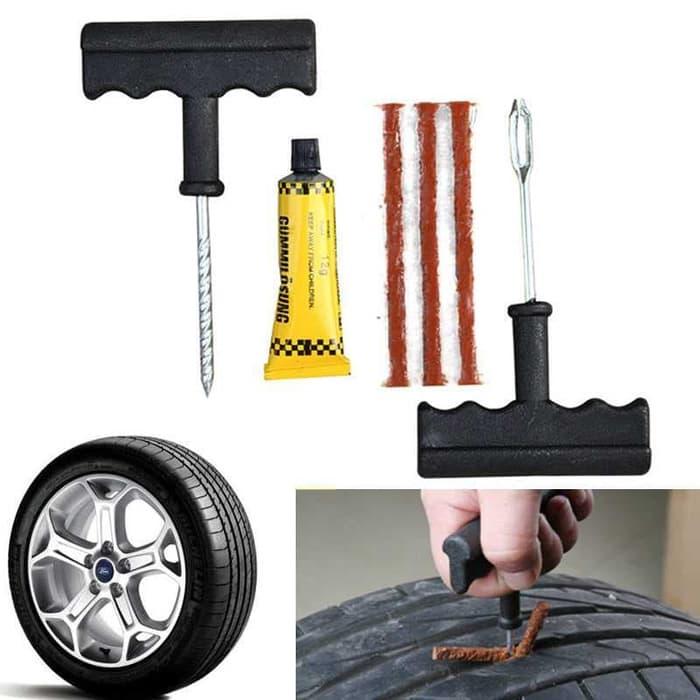 After preparation, vulcanizing cement is then applied to the patch and inner liner of the tire and the patch is applied over the puncture hole. The patch and surrounding area is stitched or rolled, and may be covered with sealant before the tire is put back on the rim. The tire industry also considers this repair method to be improper because it may allow air and moisture to seep into the tire through the injury channel from the tread surface.
After preparation, vulcanizing cement is then applied to the patch and inner liner of the tire and the patch is applied over the puncture hole. The patch and surrounding area is stitched or rolled, and may be covered with sealant before the tire is put back on the rim. The tire industry also considers this repair method to be improper because it may allow air and moisture to seep into the tire through the injury channel from the tread surface.
It is NHTSA’s position that a combination repair is the only way to properly repair a tire puncture. A combination repair consists of a repair patch with a rubber plug/stem attached to its center. There are some rare circumstances when a separate patch and plug can be used, but normally the industry guidelines recommend a combination repair unit that is only one piece. After a puncture is located, it is reamed out to create a clean hole for the plug. The area around the puncture on the inside of the tire is then prepared to bond with the patch. Vulcanizing cement is applied to that area and to the patch/plug combination. The plug is pulled from the outside of the tire through the reamed hole so that it completely fills the hole and created a tight seal with the rubber of the tire. The patch bonds to the inside of the tire, preventing air from escaping with the plug seals the puncture hole preventing air form escaping while the plug seals the puncture hole preventing air and moisture from invading the tire. The rubber stem is trimmed to be even with the surrounding tread.
Vulcanizing cement is applied to that area and to the patch/plug combination. The plug is pulled from the outside of the tire through the reamed hole so that it completely fills the hole and created a tight seal with the rubber of the tire. The patch bonds to the inside of the tire, preventing air from escaping with the plug seals the puncture hole preventing air form escaping while the plug seals the puncture hole preventing air and moisture from invading the tire. The rubber stem is trimmed to be even with the surrounding tread.
Tire Repair Litigation
The above tire repair methods have been in use for decades and litigation involving the failure of repaired tires is not new, nor is it particularly widespread. In fact, tire manufacturers will use “improper repair” as one of their primary defenses in litigation. Most recently, in October of 2011, a state court jury in Tampa, Florida awarded $13.64 million to Gwen and Roy Chattelle after they suffered a tire failure and crash at highway speed that rendered her a quadriplegic.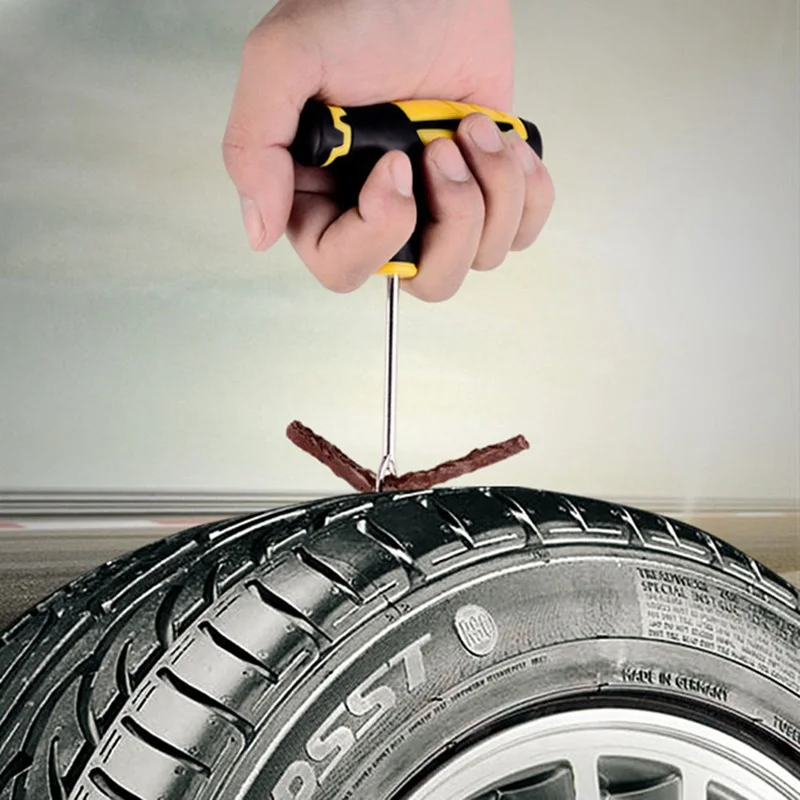 The case went to trial against the service center and its employee, who inspected and improperly repaired a tire before the crash.
The case went to trial against the service center and its employee, who inspected and improperly repaired a tire before the crash.
Three months prior to the crash, the Catelli’s right rear tire was low on air and was inspected and repaired by Tampa Auto Repair. There was no evidence introduced showing that the right rear tire had been moved, replaced or repaired again between the time of the repair and the time of the crash. At the time of the crash, the tire experienced a partial tread separation, suffered a catastrophic loss of air pressure and as a result, the vehicle went out of control rolled over several times. Inspection of the failed tire showed that it had two punctures. The first puncture had been repaired with an improper string plug and was already in the tire. Plaintiffs contended that the second puncture was an additional improper repair by the defendants that never properly bonded and, as a result, the repair unit became dislodged. Plaintiffs’ experts opined that the Defendants violated industry standards and their own internal policies requiring a tire with an existing improper repair to be removed from service rather than repaired. Destructive testing showed rust on the second puncture and evidence verifying the corrosion of the belts from exposure to air and moisture. The jury returned a verdict for the plaintiffs, finding that the repair shop and its manager were liable for the Plaintiff’s damages. In march 2011, a jury in San Diego County, California awarded almost 14.5 million to the minor sons of Casey and Melanie barber who were killed in a 2006 Accident in which their van rolled over. At the time of the accident, the Barbers’ children were 3, 5 and 8 years old. The Barber case went to trial against a dealership that had repaired the tire using “patch-only” repair method described above. Additionally the puncture in the Barber’s tire was outside the reparable are recognized by the tire industry and evidence was presented at trial that the mechanic failed to prepare the area around the puncture to bond with the patch. Evidence was introduced that the tire mechanic who performed the repair had been on the job for less than a week and the shop had provided him with no how to properly repair a tire.
Destructive testing showed rust on the second puncture and evidence verifying the corrosion of the belts from exposure to air and moisture. The jury returned a verdict for the plaintiffs, finding that the repair shop and its manager were liable for the Plaintiff’s damages. In march 2011, a jury in San Diego County, California awarded almost 14.5 million to the minor sons of Casey and Melanie barber who were killed in a 2006 Accident in which their van rolled over. At the time of the accident, the Barbers’ children were 3, 5 and 8 years old. The Barber case went to trial against a dealership that had repaired the tire using “patch-only” repair method described above. Additionally the puncture in the Barber’s tire was outside the reparable are recognized by the tire industry and evidence was presented at trial that the mechanic failed to prepare the area around the puncture to bond with the patch. Evidence was introduced that the tire mechanic who performed the repair had been on the job for less than a week and the shop had provided him with no how to properly repair a tire.
This highlights the fact that consumers are unacquainted with proper tire repair methods and assume they can rely on “professional” tire repair facilities to employ mechanics with the training necessary to complete repairs properly. These recent cases emphasize the need for minimum training requirements for persons authorized to perform tire repairs. There is currently no Automotive Service Excellence certification for tire repair.
In 2006, a minor child in Florida was injured when the vehicle he was riding in experienced a tire blow out and crashed. The tire had been repaired at a service station with a string plug, but no patch. The Plaintiff sued the manufacturers of the string plugs, claiming that plug only repairs are unsafe and unreliable and can lead to tire failure. The trial court granted summary judgment to the plug manufactures, ruling the plugs were not defective in and of themselves because both sides’ experts testified that they could be used safely in combination with a patch. The court of appeals reversed holding that even if a string plug was not defective in all situations, such as when used in combination with a tire patch, the jury could have found that the string plugs failed to perform as safely as a reasonable consumer would expect under Florida’s “consumer expectation” standard in product defect cases.
The court of appeals reversed holding that even if a string plug was not defective in all situations, such as when used in combination with a tire patch, the jury could have found that the string plugs failed to perform as safely as a reasonable consumer would expect under Florida’s “consumer expectation” standard in product defect cases.
In 1996, in Peterson V. Ress Enterprises, a Chicago jury awarded $12.65 million to the Plaintiff. Peterson was a college student who was rendered quadriplegic in an accident resulting from a tire failure. The Plaintiff contended that the accident tire was improperly repaired by the defendants using a plug-only repair five months before the crash. On appeal, the appellate court affirmed the judgment in favor of the Plaintiff. The appellate court’s summation of the expert testimony in instructive about how string plug repairs can lead to tire failure:
Plaintiff’s expert testified that the tire failed upon road hazard impact because it was improperly repaired for a puncture with a string plug, causing air to seep into the tire’s casing. Goodyear’s expert testified that he failed tire was weakened prior to the accident by air seepage and migration resulting from Ress’ string repair.
Goodyear’s expert testified that he failed tire was weakened prior to the accident by air seepage and migration resulting from Ress’ string repair.
Goodyear’s other tire expert testified that tire failures result from string plug repairs and that a string plug without a patch does not effectively seal a tire’s inner liner and air can seep into a tire’s carcass. Goodyear’s expert further testified that tread separation affects belt strength and renders a tire less capable of traversing road hazards.
Despite widespread knowledge among such industry experts that string plug repairs are unsafe; this knowledge does not appear to be shared by the public. One challenge for plaintiffs in prosecuting a tire repair case is that many jurors have preconceived opinion that patch-only and plug-only repairs are safe and effective. Due to the lack of knowledge, many consumers believe these repairs are proper. These misconceptions are buttressed by the fact that improper can last years without failure.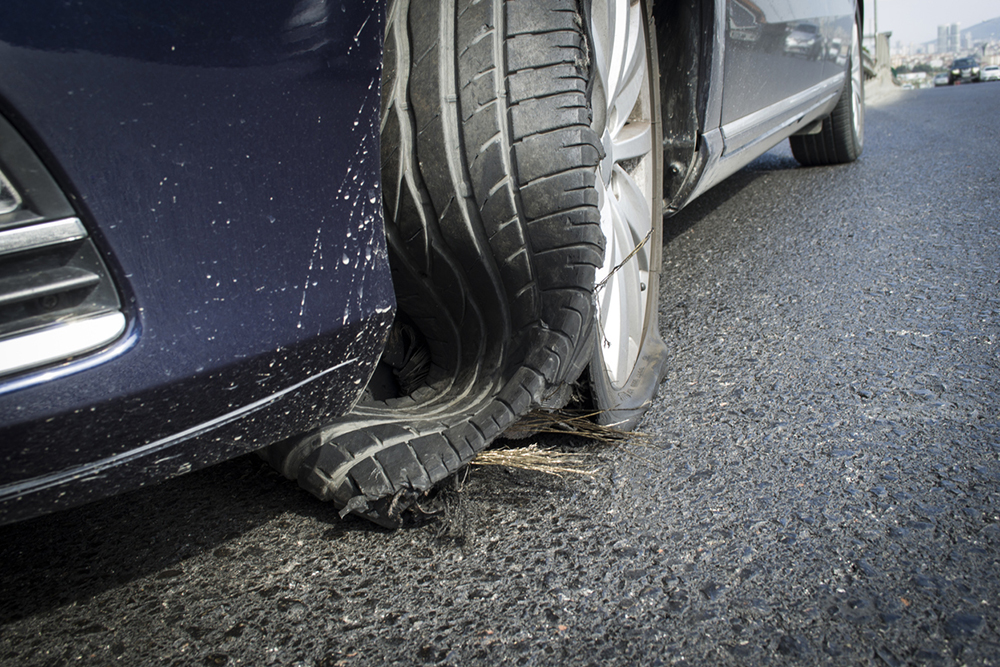 As a result, any juror seated in a tire repair case will likely have either personal experience with plug-only or patch-only repairs that perform without incident. Potential jurors will also hear a long string of anecdotes from other potential jurors who used these improper repairs without incident.
As a result, any juror seated in a tire repair case will likely have either personal experience with plug-only or patch-only repairs that perform without incident. Potential jurors will also hear a long string of anecdotes from other potential jurors who used these improper repairs without incident.
A second challenge, which was highlighted by the Peterson case, is that most failed tires have been in service for some period of time and show signs of some form of abuse or misuse, such as road hazards, under-inflation or overloading. These conditions, which may or may not have contributed to the tire’s failure, create challenges in proving causation. They certainly result in ready-made defense for defendant tire manufactures. Oftentimes, multiple causes will come together, such as in Peterson, where the collective trial experts opined that the immediate precipitation event was an impact with an unknown road hazard. However, the collective Peterson experts reasoned that the tire was unable to withstand a road-hazard impact because it was already weakened by internal deterioration from the string plug.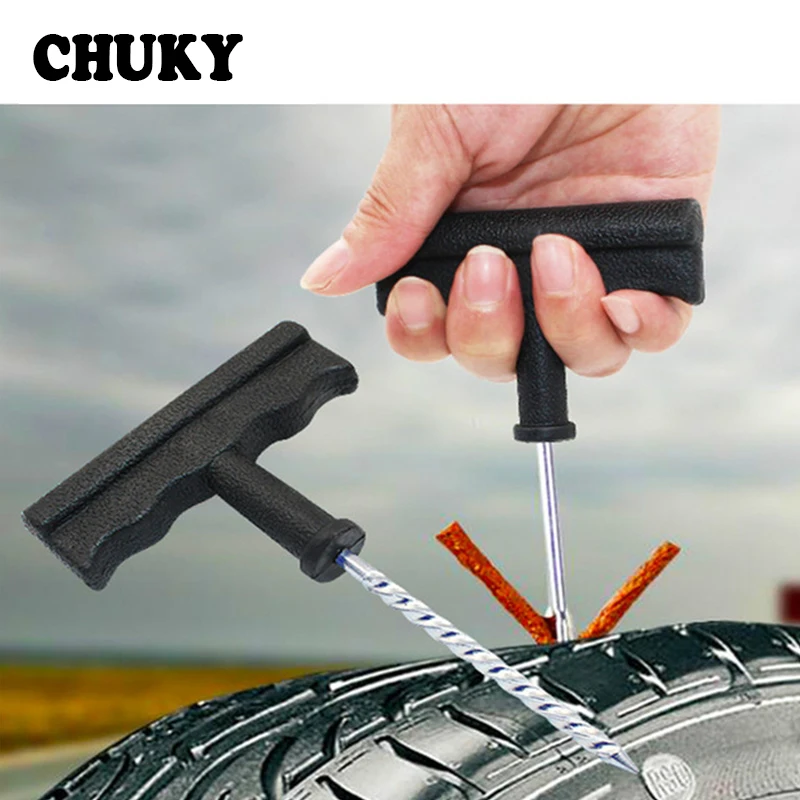
Why the use of Improper Repairs Persists Despite Clear Warnings
Despite the difference of a few dollars in cost between an unsafe, improper repair and a safe combination repair, widespread use of these improper repairs persists. Several factors contribute to this continued popularity of improper repair techniques. First, because plug-only repairs are performed from the outside of the tire and do not require demounting the tire from the rim, a plug-only repair can performed by almost anyone, anytime and with nothing more than an inexpensive repair kit. It is a relatively simple process that does not require the multiple steps necessary for a proper repair, like demounting, sanding or buffing, nor are adhesives required, making these repairs faster and less expensive. For most people it means the difference between being able to “do it yourself” at your own convenience, and having to leave your vehicle at a repair shop to be fixed on someone else’s schedule.
Secondly, problems caused by plug-only repairs may not happen immediately and, therefore, even if the tire does eventually fail, people may not associate that failure with the repair that occurred months or years earlier.
Additionally, many tire mechanics are never trained with proper techniques and many have used string plugs for years, resulting in a comfort level with the product. Many tire repair shop policies actually encourage the use of this method. Past testimony indicates that some shops are unaware or unconcerned with the safety issues caused by plug-only repairs. Other shops yield to the wishes of consumers who may insist the mechanic perform a plug-only repair that may save money. Still other cases show that some repair facilities actually train their mechanics to use plug-only repairs and supply the shop with the tools to do so. However, even shops those “officially discourage or prohibit the use of string plugs often employ a pricing and wage structure that creates a strong incentive for its workers to use them anyway.
After reporting the out come of Barber case discussed above, one automotive repair websites received scores of comments critical of the litigious Americans” who had field lawsuits related to plug-only repairs. One commentator, apparently a mechanic at a facility that repairs tires said “We were told to patch, but I buy my own plugs … a patch pays 0.3 a plug pays 0.3” In other words, most repair facilities compensate mechanics by the type of job, assigning a specific amount of time to complete it. If a tire, it will usually take longer that the time allotted to perform a combination repair. These results in a incentive for the mechanic to use the quicker, less effective repair method to save time, make more money and move on to the next job.
Finally, consumers are unacquainted with the long term dangers of driving on tires with improper repairs. There are strong public sentiment that our government is overly active in recalling and banning unsafe products, so it is reasonable for consumers to assume that if string plug repair kits are being offered for sale legally at reputable retailers and tire repair shops, they must be safe.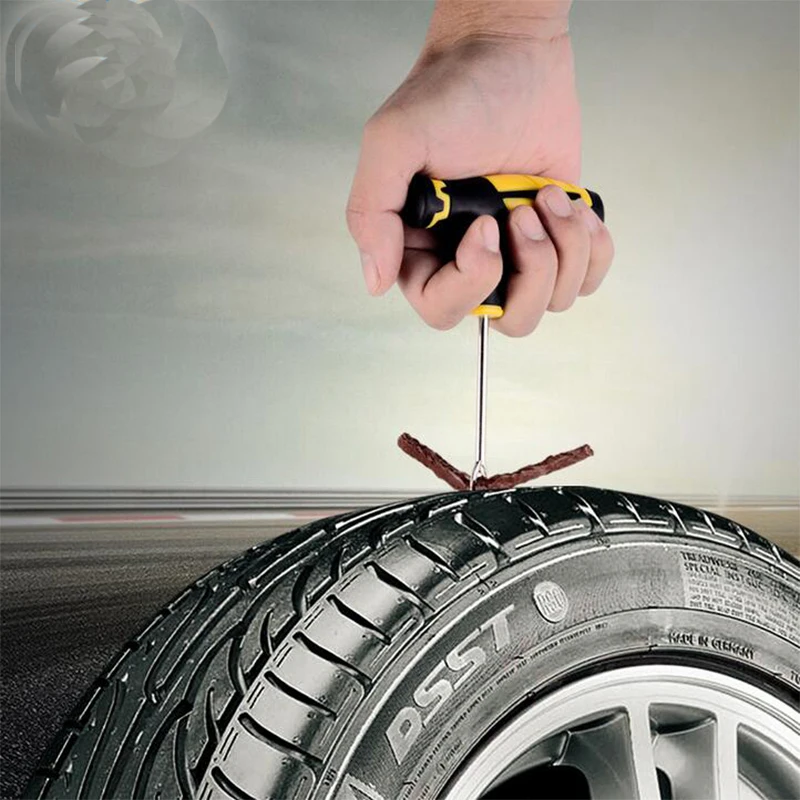 A cursory review of multiple automotive websites reveals the widely revels the widely held belief that if a string plug holds air, it is safe to use. Some consumers buy “emergency tire repairs kits” just to get them through a roadside emergency, but then forget to replace the tire. Consumers may also assume that if the tire is holding air, the string plug is “working” without realize that it is causing the tire to slowly deteriorate from the inside.
A cursory review of multiple automotive websites reveals the widely revels the widely held belief that if a string plug holds air, it is safe to use. Some consumers buy “emergency tire repairs kits” just to get them through a roadside emergency, but then forget to replace the tire. Consumers may also assume that if the tire is holding air, the string plug is “working” without realize that it is causing the tire to slowly deteriorate from the inside.
Author: Kirill Savchenko
“Chief, you've got ten minutes of work to do, the hole is nothing! Well, come up with something .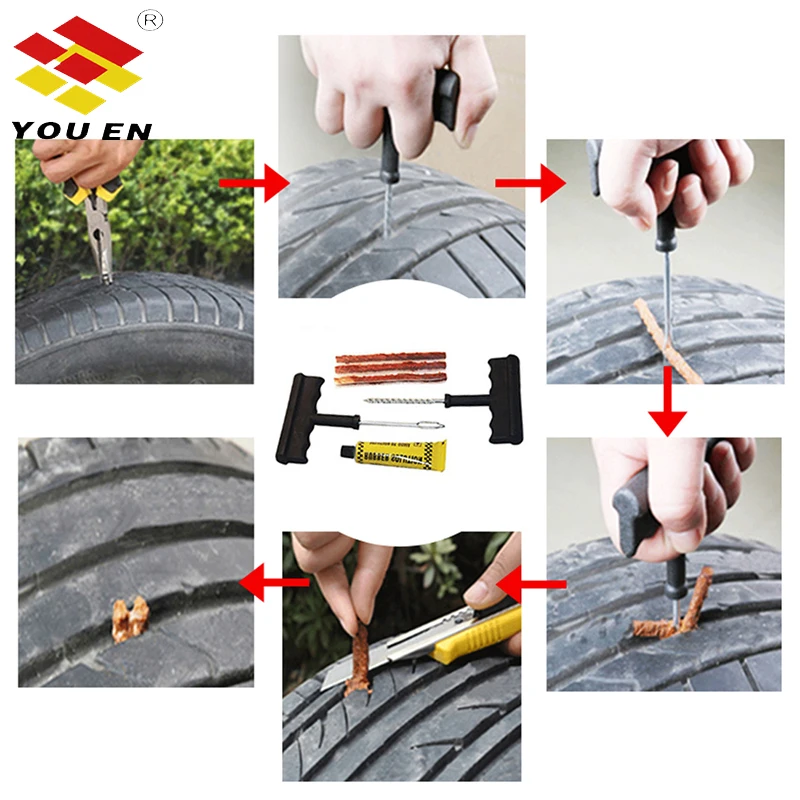 .. ”Every tire fitter has probably heard such words. Alas, not all tire damage can be repaired ...
.. ”Every tire fitter has probably heard such words. Alas, not all tire damage can be repaired ...
But the situation can be reversed. A wheel pierced by protruding reinforcement may be repairable, while a small cut will write off the tire for scrap. Experienced tire fitters believe that it all depends on the point of damage and the object that caused it.
Most often, drivers encounter punctures in the tread area of a tire. It is not always possible to detect it immediately. If in the days of tires and chambers the wheel lost pressure at the slightest puncture, then tubeless tires are much more reliable in this regard. A nail or self-tapping screw usually closes the puncture site, preventing air from escaping quickly.
With such a "plug" you can sometimes drive for months. The tire can lose pressure minimally without arousing suspicion. At the same time, an attempt to pull out a noticed nail on the way is likely to turn into a problem. In this case, the only recommendation is to pull out a foreign object only in a tire shop and repair the wheel.
In most cases, tread punctures are sealed either with special harnesses (some for temporary use, some for permanent use) or patches from the inside of the tire. Even damage caused by massive pins can be repaired. The main thing is that a piece of the tire along with the cord is not torn out.
In the latter case, the hole is filled with raw rubber, vulcanized, and a special cord patch is placed on the inside. But this will only be a temporary measure. In addition, such repairs are not cheap, and purchasing a new tire can be both more profitable and safer.
In addition to the plaster, cord “fungi” are also used. Lubricated with glue, the “fungus” is inserted into the puncture from the inside of the tire, then the excess part of the “leg” is cut off from the outside.
On the other hand, a cord patch can seriously help with side cuts. And car owners meet with them quite often. But here there are several nuances. In a roadside tire shop, the cut will most likely not heal. You need to contact a company with specialized equipment, primarily vulcanization.
You need to contact a company with specialized equipment, primarily vulcanization.
And one vulcanizer is not enough here. Cord patches should be with a certain number of layers, designed for strictly defined damage sites and of a suitable size. And again we are talking about the nuances.
If the cut is in the shoulder area of the tire, then it is often impossible to repair it properly. The tire fitter who offered such a service is at great risk, even if he claims that he will weave a piece of new cord with his hands and vulcanize it. There are no miracles in this situation, but in any case, the last word belongs to an experienced specialist.
Low-profile tires with a tread height of less than 50% of the width are difficult to heal side cuts. That is why, in the case of using a car on roads with a possibility of tire damage, it is better to put those that are higher. They are much easier and cheaper to repair.
By the way, what appears to be a cut at first glance may not be one.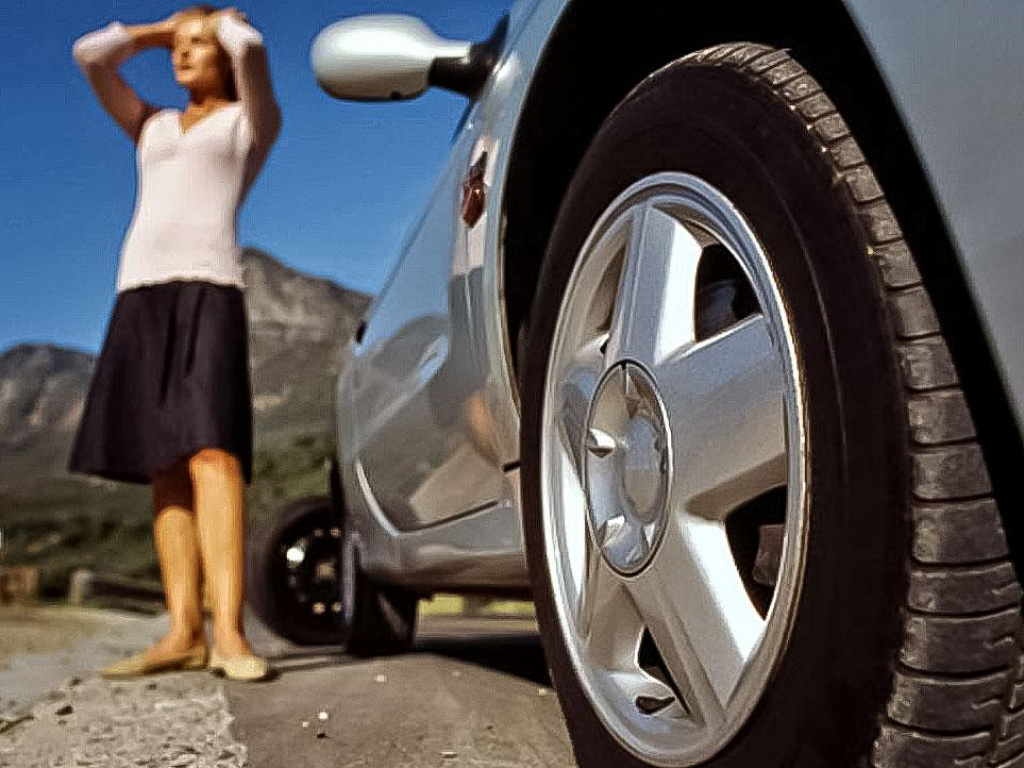 If the sidewall of the wheel catches on something sharp, and a tear forms on the tire without damaging the cord, then this is called a pinch. It does not carry momentary danger and does not require any complex repairs.
If the sidewall of the wheel catches on something sharp, and a tear forms on the tire without damaging the cord, then this is called a pinch. It does not carry momentary danger and does not require any complex repairs.
However, if a piece of rubber remains, then it is glued with ordinary superglue. If not, you will need raw rubber and a vulcanizer. It is impossible to leave the cord bare: under the influence of moisture, it can collapse, which will lead to the complete loss of the tire.
One of the most common and fatal tire defects is swelling or simply "herniation". Despite the absence of open damage to the rubber, such a wheel will be scrapped ahead of schedule. The fact is that when the sidewall is hit, the threads of the tire carcass break. Even if the swelling is very small, sooner or later the bump grows in size, and this is already fraught with an explosion of the wheel at speed.
However, some hernias can be repaired, but this is again a temporary measure.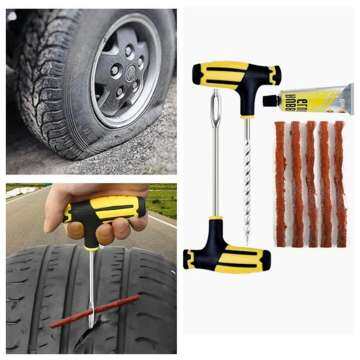 Masters can put cord patches even in the tread area. But only on condition that the distance from the sidewall to the swelling is more than 40 mm. If less, the tire is not subject to further operation. By the way, on low-profile tires, hernias, for the most part, are not repairable - both on the tread and on the sidewalls.
Masters can put cord patches even in the tread area. But only on condition that the distance from the sidewall to the swelling is more than 40 mm. If less, the tire is not subject to further operation. By the way, on low-profile tires, hernias, for the most part, are not repairable - both on the tread and on the sidewalls.
One of the major tire problems is caused by unprofessional repairs. Moreover, the owner most often does not know about it. We are talking about damage to the bead ring, as a result of which the tire does not initially hold the specified pressure.
Eventually the bead ring begins to push out of the rim. At high speed or under heavy load, such a wheel can be disassembled, which again threatens the car with a loss of control.
This damage can be repaired provided that the wire ring or base is not damaged. Special technologies for such repairs are not provided, but experienced craftsmen use the so-called "cold" or chemical vulcanization using a two-component sealant. The resulting mass covers places where there is no rubber on the bead ring. The main condition is to wait three days before mounting the tire on the disc.
The resulting mass covers places where there is no rubber on the bead ring. The main condition is to wait three days before mounting the tire on the disc.
As for Run Flat tires, according to the instructions of most manufacturers, they are not subject to repair. In extreme cases, you can use a bottle of special pressurized sealant that comes as a repair kit.
Comment of the expert of the company "SHINSERVICE":
Alexander Golubev
expert "SHINSERVICE"
First of all, we recall that most tire manufacturers do not recognize handicraft tire repair. It is considered a sign of external influence and changes in the design of the tire. Such a tire automatically voids the warranty. This does not happen if tire repairs are carried out in specialized, authorized tire brands services. Note that almost all major tire brands give their own extended warranty, according to which in most cases the repair is free, at a discount, or the product is generally replaced with a similar one, depending on the conditions of the program.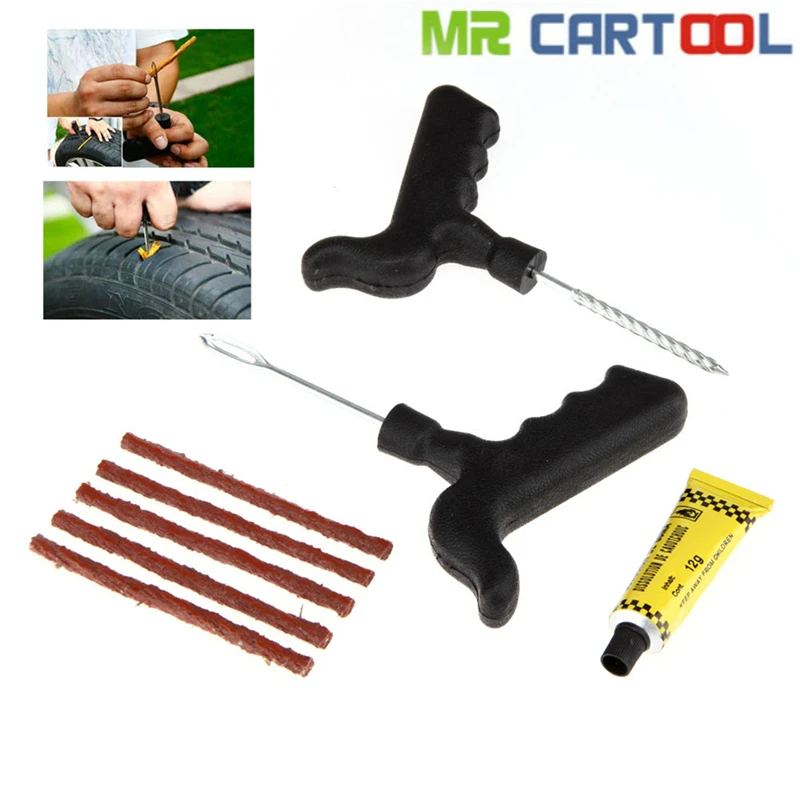
Based on our experience, we can note that in most cases damage in the bead area and in the shoulder area is not repairable.
I would also like to draw attention to the fact that most low-profile tires have high speed indexes (V and above), and even after professional repair they will not be able to be used in the previous modes without restrictions. Therefore, we strongly recommend changing the tire in all cases, except for tread punctures.
practice tires and wheels
Articles / Interesting 5 reasons to buy and not buy Geely Atlas Impressive and harmonious, solid and spectacular, very comfortable, but somewhat slow, not the most economical, but quite reliable ... All this is Geely Atlas, a car, in its time ... 871 one 0 23.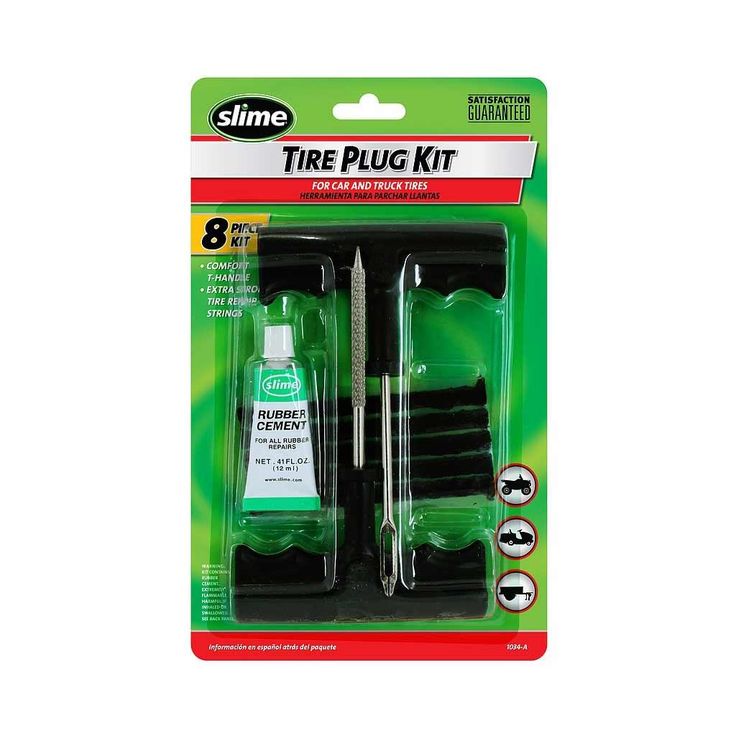 10.2022
10.2022
Articles / Practice Half a liter, potatoes and mustard to taste: folk recipes for auto chemical substitutes In the current conditions, it is easy to close your eyes and imagine that all foreign manufacturers of auto chemical goods have left Russia for some reason. Well, or just mentally transport yourself to a few ten ... 544 0 one 21.10.2022
Articles / Electric car Expensive, dangerous and nowhere to charge: 5 main misconceptions that prevent you from buying an electric car Being afraid of something new is normal. Once upon a time, people were afraid of an injector or an automatic transmission, although now these units cannot scare anyone.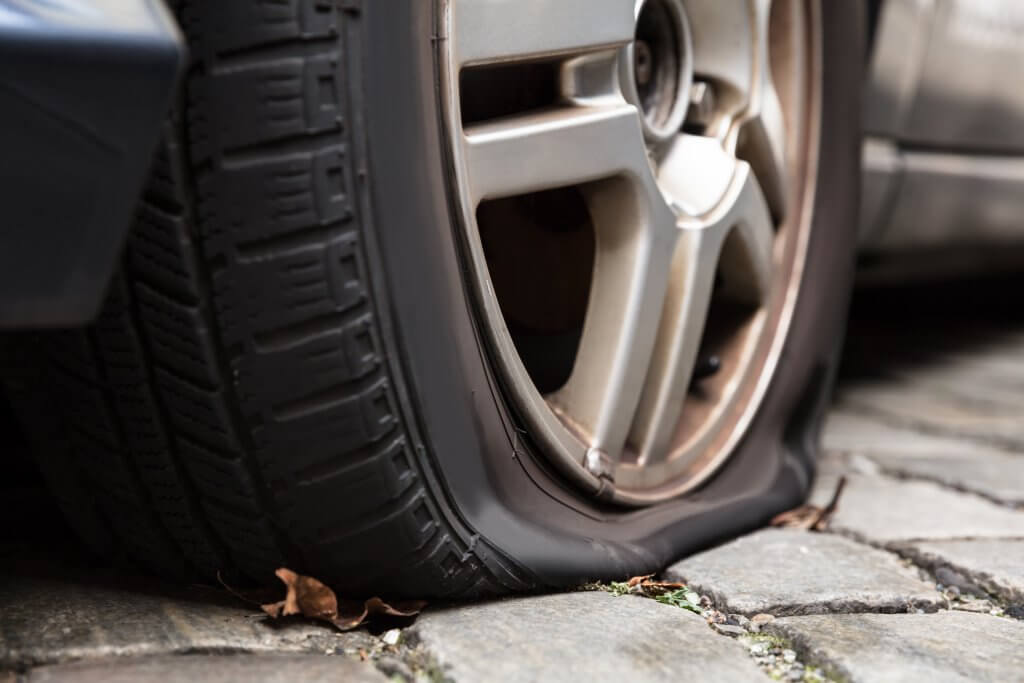 Pretty much the same... 2529 9 one 21.10.2022
Pretty much the same... 2529 9 one 21.10.2022
Test drives / Test drive Haval Dargo vs Mitsubishi Outlander: the dog is barking, the stranger is coming In the Haval dealership in the south of Moscow, life is in full swing: buyers look at cars, communicate with managers and sign some papers. While I was waiting for the test Dargo, the same cross... 14245 7 188 13.09.2022
Test drives / Test drive Motor from Mercedes, emblem from Renault, assembly from Dacia: test drive of the European Logan 1. 0 It would seem that what's new can be told about the second generation Renault Logan, known to every Russian taxi driver, as they say, up and down? However, this car has... 12194 ten 41 08/13/2022
0 It would seem that what's new can be told about the second generation Renault Logan, known to every Russian taxi driver, as they say, up and down? However, this car has... 12194 ten 41 08/13/2022
Test drives / Test drive Geely Coolray vs Haval Jolion: Free Cheese? If! Do you want to buy a car today with a full warranty, on credit at an adequate rate, without wild dealer markups? Now this is still a task, because a full-fledged chain of "representation - s... 9163 25 thirty 08/10/2022
With mileage, the technical condition of tires changes, which affects the performance of the car and traffic safety. Therefore, it is important to monitor the uniformity of wear of all tires, and also to prevent the operation of the vehicle, the residual height of the tire tread of which is lower than the minimum allowable. The task of preventing premature wear and destruction of tires is very complex and is associated with the ability to determine their types, accurately identify the cause that caused each specific tire failure. The increased wear of your car tires is influenced by many factors, or, to put it bluntly, violations. The fact is that many car owners do not follow the basic rules for maintaining their own or working car.
Therefore, it is important to monitor the uniformity of wear of all tires, and also to prevent the operation of the vehicle, the residual height of the tire tread of which is lower than the minimum allowable. The task of preventing premature wear and destruction of tires is very complex and is associated with the ability to determine their types, accurately identify the cause that caused each specific tire failure. The increased wear of your car tires is influenced by many factors, or, to put it bluntly, violations. The fact is that many car owners do not follow the basic rules for maintaining their own or working car.
This happens either due to ignorance or negligence. Due to the periodic and timely inspection of car tires, you can get complete and necessary information about the condition of the wheels and tires, the degree of wear, identify defects that are dangerous for traffic safety, determine the causes of tire wear and the features of car operation.
In addition to safety, tire condition affects handling, driving dynamics and fuel consumption .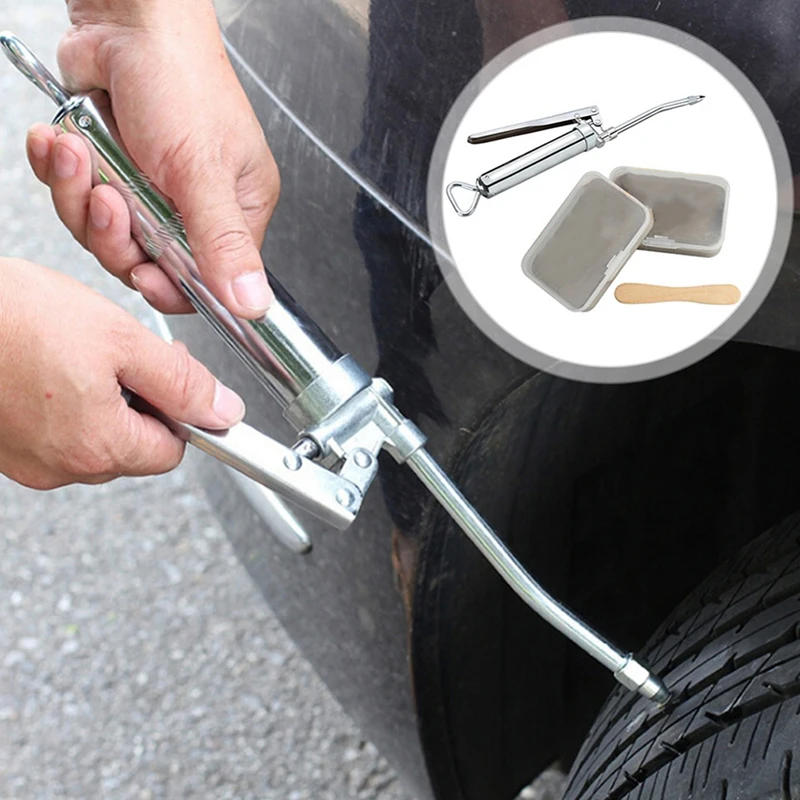 The latter is especially important for trucks and car owners with high daily mileage. Some tire manufacturers claim in their flyers that their tires will not only last longer, but will also save fuel. Let's see how tires really affect a car's fuel consumption. In a truck, this is of course more noticeable than in a passenger car, due to the large number of wheels and high loads. The rolling resistance of an entire vehicle consists of a whole list of resistances: air resistance, overcoming inertia forces during acceleration, internal resistance of engine and transmission components, and tire resistance. We will not dwell on all these factors and focus on tires.
The latter is especially important for trucks and car owners with high daily mileage. Some tire manufacturers claim in their flyers that their tires will not only last longer, but will also save fuel. Let's see how tires really affect a car's fuel consumption. In a truck, this is of course more noticeable than in a passenger car, due to the large number of wheels and high loads. The rolling resistance of an entire vehicle consists of a whole list of resistances: air resistance, overcoming inertia forces during acceleration, internal resistance of engine and transmission components, and tire resistance. We will not dwell on all these factors and focus on tires.
The total rolling resistance of tires is also made up of several components. Contrary to popular belief, tire friction on the road surface of is only 5%. A little more (about 15%) falls on air resistance . The lion's share of the energy expended (about 80%) is spent on tire deformation . If the tire is rolled along the road with no load at all, then before stopping, it will move for a long time. But if the tire is loaded so that its lower part begins to deform (compress), after the initial impulse it will stop very quickly. This clearly demonstrates how much energy is spent on the constant deformation of the tires.
But if the tire is loaded so that its lower part begins to deform (compress), after the initial impulse it will stop very quickly. This clearly demonstrates how much energy is spent on the constant deformation of the tires.
Thus, car owners may want to buy tires that will deform minimally, and therefore create less rolling resistance. Now in the market such an option is quite possible to find. As a rule, these are inexpensive budget-class tires. A stiffer carcass, although it gives some fuel economy, at the same time can present an unpleasant surprise in the form of a tire explosion. You just need to run into any object with sharp edges (stone, piece of iron, etc.). By the way, a similar situation can happen with premium tires. Some drivers, mostly trucks, inflate their tires on purpose to save fuel, without realizing that uneven wear will appear.
The chassis geometry of the also has a significant impact on fuel consumption. Even minor deviations entail extra costs.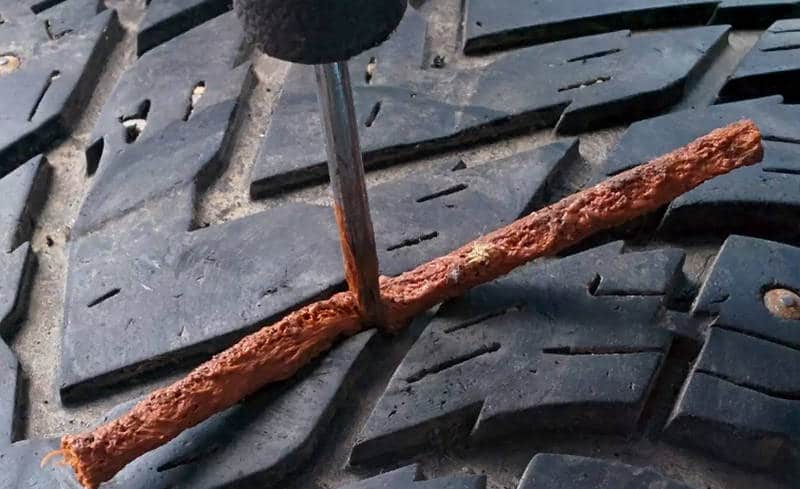 Firstly, tires wear out faster, and secondly, fuel burns more. When the wheels, figuratively speaking, go in different directions, additional energy is spent on their "drag". For example, if at one meter the wheel “leaves” only 2.5 mm, then at a kilometer it turns out that the wheel will “drag” to the side by 2.5 m. 2.5 kilometers at full load.
Firstly, tires wear out faster, and secondly, fuel burns more. When the wheels, figuratively speaking, go in different directions, additional energy is spent on their "drag". For example, if at one meter the wheel “leaves” only 2.5 mm, then at a kilometer it turns out that the wheel will “drag” to the side by 2.5 m. 2.5 kilometers at full load.
Normal tire wear
Tire inspection provides you with information about the condition of the tires and wheels, how the vehicle is used, possible defects, and driving style. So, for example, a sporty driving style leads to a different tire wear pattern than a relaxed one. For a correct assessment, it is necessary to inspect all the wheels. This is especially evident in the example of a passenger rear-wheel drive car, since the load is distributed differently between the driving and steered wheels in it.
Tire wear as a function of air temperature
Tire wear as a function of driving speed
While driving, tire wear is determined by measuring the remaining tread height.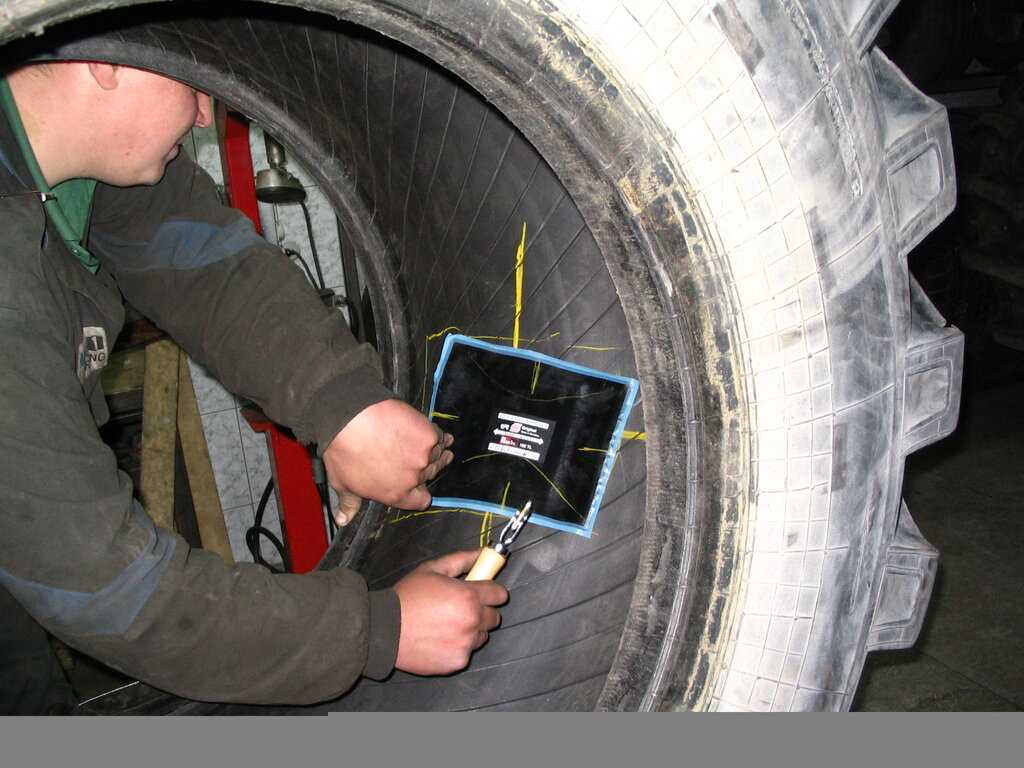 Tire wear must be uniform over the entire circumference; when the minimum tread height is reached, the tire is considered completely worn out and must be replaced. Tire wear is primarily determined by driving style. Hard acceleration and braking wears out the tire faster than steady motion.
Tire wear must be uniform over the entire circumference; when the minimum tread height is reached, the tire is considered completely worn out and must be replaced. Tire wear is primarily determined by driving style. Hard acceleration and braking wears out the tire faster than steady motion.
Drive and steer wheels have different wear patterns due to different loads. Steered wheels wear more on the sides, since it is on this part of the tire that the main load in the turn occurs. The tires on the drive wheels wear more in the middle , since it is this part of the tire that contacts the asphalt and transmits the rotation of the wheel to the road. On vehicles with front-wheel drive, the wear is "cumulative" - in this case, the entire tire wears out evenly and its central part and sides.
One-sided wear (possible reduction in wear from 15% to 30%) - occurs more often than others, since there are several reasons for its occurrence. One-sided tire wear can be caused by an error in suspension geometry. To determine the cause in this case, it is necessary to check the toe-in and camber. Wear on the outer side of the tire can be caused by excessive positive toe or camber . Wear on the inside of the tire, on the other hand, causes excessive negative toe or camber. Driving with zero camber results in even but increased tire wear. In addition, it increases the tire's rolling resistance and increases fuel consumption . In addition to the tires of the steered axle, tires of other axles can also be subject to one-sided wear - again due to problems with the geometry. This is either a lack of alignment, or deformation of the axes themselves. On steering tires for tractors, one-sided wear may appear due to the operating conditions of the vehicle. Another reason is cornering at high speeds. To prevent one-sided wear, you need to monitor the condition of the chassis, periodically check the geometry and abandon the aggressive driving style.
One-sided tire wear can be caused by an error in suspension geometry. To determine the cause in this case, it is necessary to check the toe-in and camber. Wear on the outer side of the tire can be caused by excessive positive toe or camber . Wear on the inside of the tire, on the other hand, causes excessive negative toe or camber. Driving with zero camber results in even but increased tire wear. In addition, it increases the tire's rolling resistance and increases fuel consumption . In addition to the tires of the steered axle, tires of other axles can also be subject to one-sided wear - again due to problems with the geometry. This is either a lack of alignment, or deformation of the axes themselves. On steering tires for tractors, one-sided wear may appear due to the operating conditions of the vehicle. Another reason is cornering at high speeds. To prevent one-sided wear, you need to monitor the condition of the chassis, periodically check the geometry and abandon the aggressive driving style.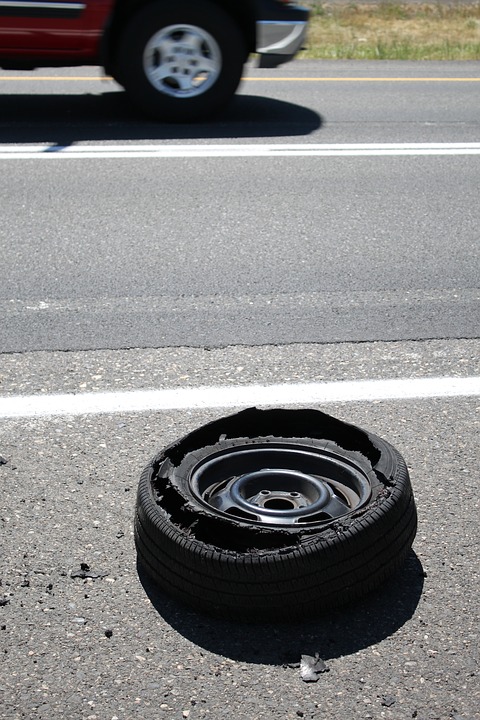
Bilateral and central wear (possible reduction in mileage from 5% to 10%) appear for the same reason - tire pressure mismatch. When the pressure is below normal, the tire begins to wear more at the edges, and bilateral wear is obtained. The same thing happens during overload - the tire, even with normal pressure, rides as if it were lowered. Fans of pumping tires get a different result: the load on the contact patch is not distributed evenly, but closer to the center, which means that the tire wears out faster in the central part of the tread. Anyone who monitors tire pressure and does not overload the car does not encounter such problems.
Multiple wear around the circumference
Spotty wear (possible 10% to 20% reduction in mileage) is a direct result of imbalance. It is especially characteristic of steering axle tires, but can appear on all axles. If such wear has become visible to the naked eye, the problem is obvious. Balancing will correct the situation, but only partially: a wheel that has lost its roundness will wear out more intensively. Therefore, it is more expensive to ignore balancing when buying and installing new tires. Repeated wear around the tire circumference can cause suspension failure (arms, dampers, springs). After diagnosing and repairing the suspension, the tire must be replaced, since this wear pattern no longer ensures its uniform rotation, and the wheel will “beat”.
Balancing will correct the situation, but only partially: a wheel that has lost its roundness will wear out more intensively. Therefore, it is more expensive to ignore balancing when buying and installing new tires. Repeated wear around the tire circumference can cause suspension failure (arms, dampers, springs). After diagnosing and repairing the suspension, the tire must be replaced, since this wear pattern no longer ensures its uniform rotation, and the wheel will “beat”.
Spot wear
Spot wear in one spot is the result of emergency braking with a locked wheel. The uniformity of rotation of the wheel in this case is also broken and the tire will have to be replaced. If you leave the car for a long time in the parking lot, then there is a risk of flat areas on the tires, which then during the movement will cause the wheels to vibrate. It is recommended to increase the pressure in the tires if you leave the car for a long time. A similar effect can also be caused by stopping the car after intense sports driving - heated tires are easily deformed at the points of contact with the road surface and practically “freeze” in this state. This defect is easy to fix - after warming up the tires, they will again acquire a round shape.
This defect is easy to fix - after warming up the tires, they will again acquire a round shape.
Comb (saw) wear (possible reduction in mileage from 10% to 20%) is a form of uneven wear. It can often be seen on drive axle tires with a block tread pattern. It is caused by the fact that during the movement the tire is deformed - at the point of contact with the road, the tread is pressed inward (the blocks are crushed and dragged along the road surface), and as the wheel rotates further, it straightens again. This causes the tread to wear more on the front edge than on the back. The result of this wear is an increase in tire rolling noise. It is impossible to avoid the appearance of comb wear, but with the help of permutations, its negative effect on tire mileage can be leveled. Drivers can also influence the situation: if you step on the gas pedal as smoothly as possible, comb wear will be minimal. To even out this wear, tires are usually swapped, as tires on a non-drive axle are more susceptible to this wear.